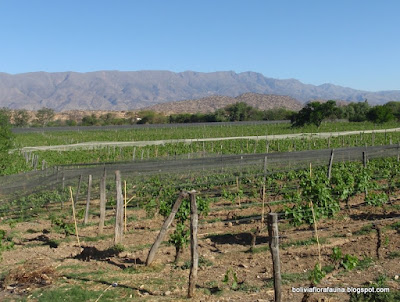Flora and fauna don’t necessarily have to strictly be an intellectual topic. They can be cute, scary, or gorgeous. But they can also be quite delicious! This month’s mystery macro was a perfect example.
There were some interesting guesses: (1) A vegetable, something to eat, (2) Brussels sprouts, just starting to grow, (3) The head of a flower that will eventually have little white bells, and (4) Some type of animal that lives in the water and has egg sacks attached to its body. Anyone correct guesses? Well, #4 was a very imaginative guess, but it is flora, not fauna, so we have to cross it off. It isn’t a flower, so scratch #3. It’s not Brussels sprouts so #2 is out. And although it is edible, it is a fruit instead of vegetable so #1 is only half-correct. Sorry! No winners this time. Do you want to see the whole picture from which we took this month’s mystery macro?
What do you think now? Of course there is a clue in the title of this entry. But here’s
another photo taken from a few steps further back:
OK. Let’s just cut to the chase. Here’s the answer we’re all dying to see:
Grapes! That’s right! So what is shown in the mystery photo? Baby grapes! My wife has in her hand a cluster of grapes in its infancy. Grapes are delicious flora! And they are grown in great quantities in the department of Tarija, Bolivia.
Why so many grapes in Tarija? Of course, as an edible fruit they are very popular. However, in addition to being a healthy snack, there is another reason. It just so happens that the climate in the Tarija valley is perfect for grapes used to produce wine.
In fact, Tarija is the largest producer of grapes in Bolivia, earning it the title of “Grape Capital of Bolivia”. Less than an hour by car from the center of Tarija is an area called Valle de la Concepción. This area is to Bolivia what Napa Valley and Sonoma Valley are to California; or what the Bordeaux region is to France.
You may be surprised to learn that wine production in Tarija dates back to 1584 with the arrival of the Spanish and Portuguese. (Or maybe that doesn’t surprise you!) And there are still wineries that produce artisan wines where stomping the grapes by foot is still the practice. (With sanitized rubber boots, we are told...)
Tarija may be situated at nearly 2,000 meters above sea level (6,500 ft), but it is still between the equator and the Tropic of Capricorn. This balance of altitude and proximity to the equator, along with the valley’s protection from nearby mountain ranges, provide for very moderate weather.
It is not uncommon for local families to grow grapes on their land. They then sell the grapes they harvest to a local winery. They may even have an agreement beforehand to do so.
What varieties of wine grapes grow in Tarija? Here is a list of some that are more commonly known:
 Barbera
Barbera- Cabernet Sauvignon
- Chardonnay
- Malbec
- Merlot
- Pinot Blanc
- Pinot Gris
- Pinot Noir
- Riesling
- Sauvignon Blanc
- Syrah (Shiraz)
However there are some lesser known grapes that are also grown in the Tarija valley. They include Colombard (French Colombard), Tannat (Tanat), and Trebbiano (Ugni Blanc).
But there is one last grape that needs to be mentioned: Muscat of Alexandria (Moscatel de Alejandría). This grape is used in Bolivia almost exclusively for the production of Singani. Singani is a distilled alcoholic spirit, and since it comes from grapes it is a colorless fruit brandy. It is produced by means of fermentation and double distillation. Bolivia is the only country in the world to make it, so Singani is considered Bolivia’s national drink.
So whether you fancy sipping a ‘high-altitude’ wine, having a nip of Singani, or just popping a few fresh grapes in your mouth, we can thank Bolivia’s flora, these little balls of juicy goodness, for making it all possible!











Grapes! As simple as that!
ReplyDeleteGreat presentation.
Yep! How simple was that? And thank you for reading!
ReplyDelete